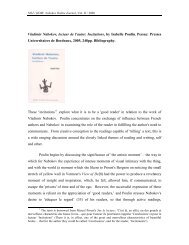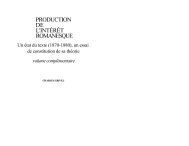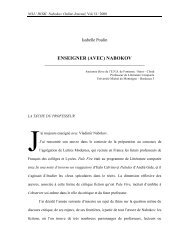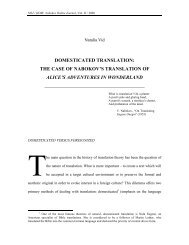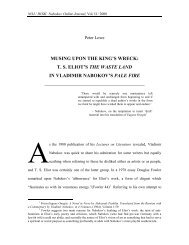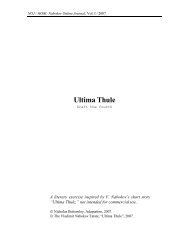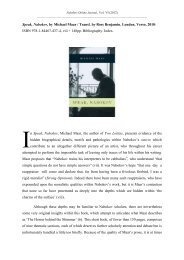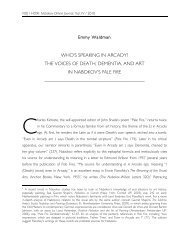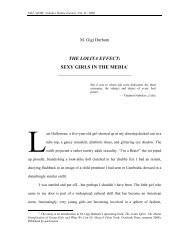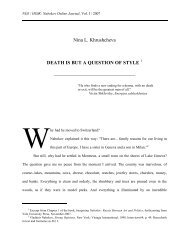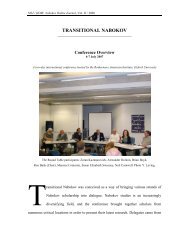You also want an ePaper? Increase the reach of your titles
YUMPU automatically turns print PDFs into web optimized ePapers that Google loves.
Nabokov Online Journal, Vol. V (2011)<br />
_______________________________________________________________________<br />
Humbert’s objectification of his desire, hinting at a depth and wealth of Lolita’s world<br />
Humbert cannot define for us; her subjectivity shines through in its unknowability, in its<br />
potential:<br />
There was the day when having withdrawn the functional promise I had<br />
made her on the eve … I happened to glimpse from the bathroom, through<br />
a chance combination of mirror aslant and door ajar, a look on her face …<br />
that look I cannot exactly describe … an expression of helplessness so<br />
perfect that it seemed to grade into one of rather comfortable inanity just<br />
because this was the very limit of injustice and frustration – and every<br />
limit presupposes something beyond it – hence the neutral illumination.<br />
(283-84)<br />
These late moments of illumination (the classical anagnorisis) expose Humbert’s<br />
defining trait, which is not, contrary to his own perception, his pedophilia; nor is it,<br />
however much it might disappoint him to realize, poetic talent. Rather, Humbert is<br />
defined by perpetually errant judgment, a characteristic that in the classical style renders<br />
him a tragic hero, inexorably destroying him and the girl he had loved.<br />
Recapitulating Humbert’s earlier assertion that “poets never kill” (88), the<br />
murderous dénouement of the novel overturns the narrator’s prior self-conception as poet.<br />
In the process of introspection and writing, Humbert learns to pay attention, to listen and<br />
notice, transforming himself from a hack who deforms and destroys into an artist who<br />
recovers Lolita. To achieve this transformation, Humbert has had to undergo a series of<br />
literary trials and tribulations; ultimately the novel ends with the validation of art and its<br />
incompatibility with crime, the book’s last line affirming immortality, the gift of life as<br />
art’s purpose. 15 By rendering its subject aesthetically, art provides it with timeless<br />
meaning, gives it eternal life. In his afterword to the novel, “On a Book Entitled Lolita,”<br />
Nabokov directs his audience toward such a reading. The difference between art and that<br />
which only pretends to be so, he asserts, is that the former provokes in the reader the<br />
feeling of “aesthetic bliss,” “that state of being where art (curiosity, tenderness, kindness,<br />
15 “And this is the only immortality you and I may share, my Lolita” (309).<br />
9



